Almost every country in the world has its own national dance and dress, passed down through generations, encapsulating the very essence of what makes each culture unique. Most countries even have a variety of different folkloric dances that represent the nuanced differences of the various regions of the country.
That being said, Egypt’s traditional folklore dance and dress is both fascinating and entertaining, perfectly capturing the country’s rich culture. Although folklore dancing may not necessarily be widely recognized or alive to this day – rather bellydancing takes the lead as a recognized national dance – it is still practiced, performed and celebrated on a smaller scale.
There was a time however, during the mid-to-late 20th century, when Egypt’s folklore dancing was both highly regarded and widely recognized; this is in large part due to the wonderful Reda Troupe, which will be a point of focus later on in the article.
Before we explore Egypt’s folklore dance and dress further, and how this artistic form of expression is integral to the maintaining of a society’s traditions and culture, we will take a look at a brief history of dance in Egypt.
Dancing in Ancient Egypt
The traditions of dancing in Egypt date all the way back to ancient times, as many wall paintings have been found depicting various types of dances carried out in ancient Egypt.
What is known about dancing in ancient Egypt thus far is the fact that women and men have not been depicted dancing together, but rather each gender would dance separately. Women are mostly depicted dancing either alone, in pairs or in a group and they seem to have also had a specific kind of dress for dancing.
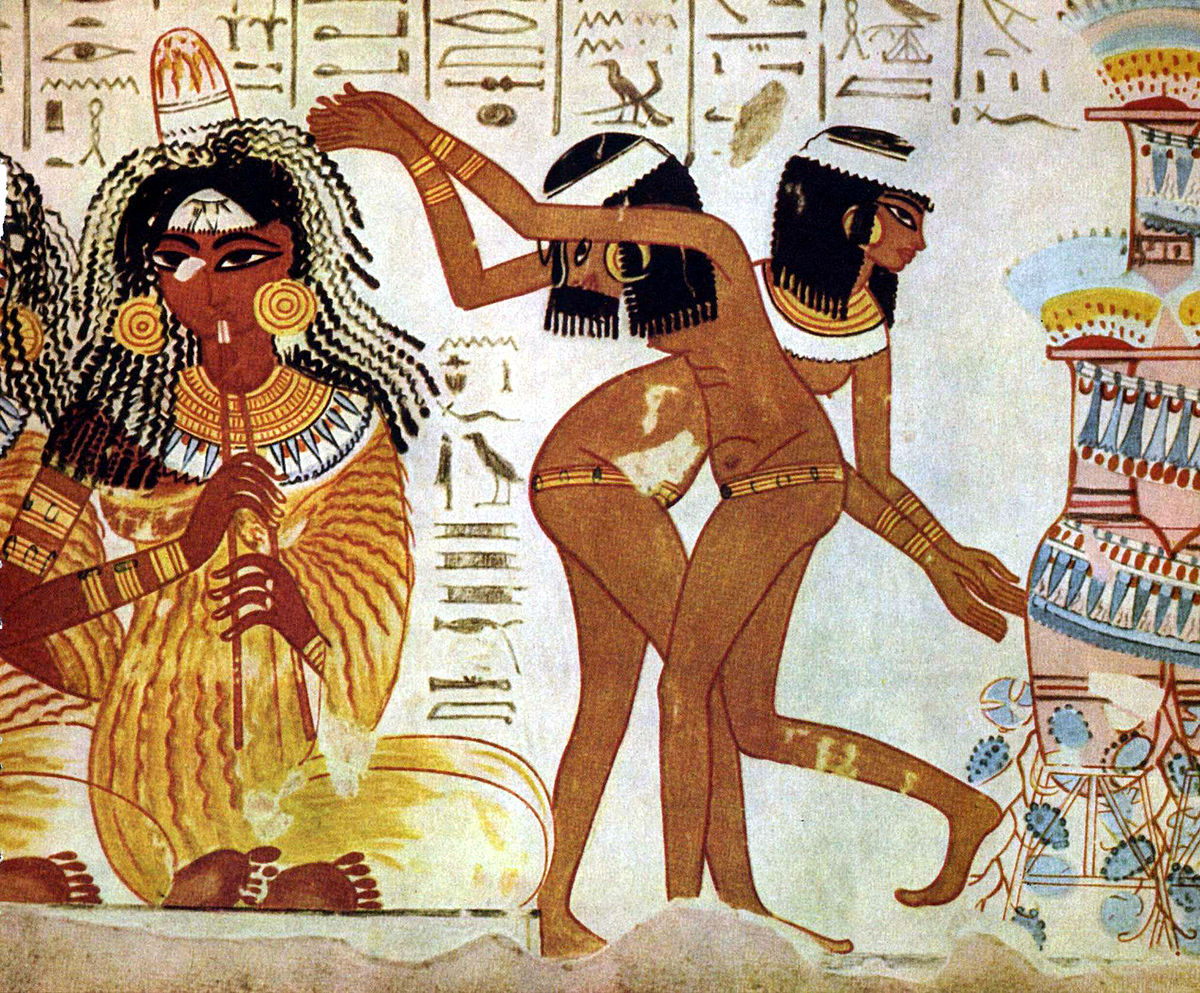
Dancers would usually wear skirts and occasionally a transparent robe; they would also adorn themselves with ribbons, bracelets and garlands.
According to an article published on Ancient History Encyclopedia, “Music and dance were highly valued in ancient Egyptian culture, but they were more important than is generally thought: they were integral to creation and communion with the gods and, further, were the human response to the gift of life and all the experiences of the human condition.”
As such, it is no wonder that there have been around 11 different types of dances to have been recorded in ancient times, ranging from those of ritualistic or religious nature to those of a storytelling nature as well as those that were for pure entertainment purposes. Bellydancing is also said to have originated in Egypt since pharaonic times.
The Evolvement of Traditional Egyptian Folklore Dance
It is not clear exactly how far back traditional folklore dancing in Egypt dates, however what is known is that it differs from one region to another.
According to an article of Fanack, “Folkloric dance in Egypt is divided regionally into the dance from the Delta (fellahi), the Upper Delta (Saidi), the coastal area (Sawahili), Sinai (Bedouin), and the Nubian area.”
Even so, each region still also has slightly different variations of dance and dress in accordance to specific governorates. For example, Cairo is mainly known for its raks baladi (bellydance), whereas a place such as Suez is known for a unique style of dance known as the ‘bouncy dance’ which fuses bedouin dance and music traditions with those of a European nature.
Perhaps the most commonly known forms of folklore dance are the Nubian, the Saidi and that of the Western Desert area (Bedouin dance).
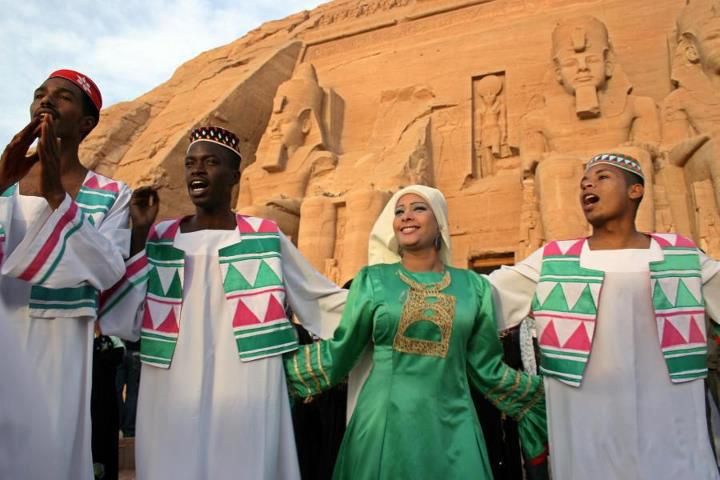
Nubian dances are colorful and upbeat, with men and woman mostly standing straight and moving their feet to the beat – it doesn’t involve much footwork. Saidi dances are perhaps the most well known, most especially the Tahtib (stick dance) performances. Tahtib is mainly performed by men and it involves the use of sticks in a choreographed dance style that fuses fighting techniques as well. The Western Desert region is known for its amusing Haggalah dance, which mainly involves fast and controlled hip movements performed by female dancers.
When it comes to folklore traditional dress, most of the regions dress somewhat similarly, with men often donning galabeyas (long dress-like garments) and women also wearing galabeyas that are more fitted and colorful. Men’s galabeyas are usually loose, plain and found in a range of darker or neutral colors such as beige, brown and navy, whereas women’s galabeyas are more fitted, vibrantly colored and could also consist of various patterns.

Women also adorn themselves with various accessories such as scarves wrapped around their waists, scarves wrapped around their heads, as well as bracelets and anklets. These accessories vary from one region to the other.
The Reda Troupe: Reigniting Egyptian Folklore Dance
It wasn’t until the late 1950s when a bright light was shown on traditional Egyptian folklore dance, all thanks to the Reda Troupe which performed publicly for the first time in 1959.
The Reda Troupe was established by the Reda and Fahmy family, both artistically inclined and passionate about the arts, dance and preserving their culture.
Mahmoud Reda and Farida Fahmy, both of whom married each other’s siblings, were the troupe’s two main members. Reda was the lead male dancer and choreographer, while Fahmy was also the troupe’s lead female dancer.
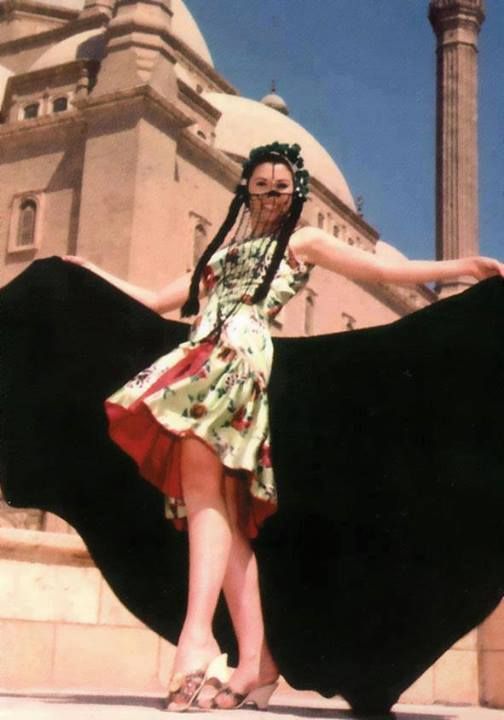
Through years of travel, research and experience, together they were able to manifest the various magnificent traditional dances of Egypt into wonderful show-stopping performances; these intricately designed performances garnered so much success and attention that the troupe found themselves performing alongside the likes of Abdelhalim Hafez and Um Kulthoum.
One can also watch the troupe’s mesmerizing performances on screen through cinema classics such as Agazeit Nos el Sana (Mid-Year Break – 1962) and Gharam Fel Karnak (Love at Karnak – 1965), which showcase the dancers’ wonderful abilities through song, dance and dress.
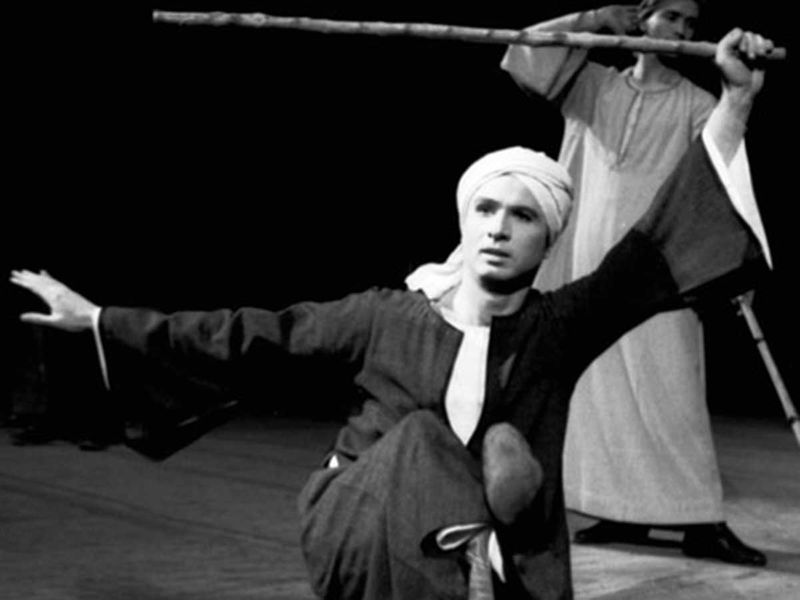
Although the Reda Troupe rose to great popularity, the troupe slowly began to demise towards the late 1970s and early 1980s, after which both Reda and Fahmy ended their careers as dancers and there was no one left to take over their legacy.
Where Does Folklore Dance Stand Now?
“I am writing this postscript not with anger but with a heart that is filled with disappointment and sorrow. The glorious years spent in hard and passionate work by Mahmoud Reda and his co-founders pioneering the first and most popular theater dance group in Egypt and the Arab World have now disappeared,” reads a powerful postscript written by Fahmy on her website in 2015.
Following the Reda Troupe, Egyptian folklore dance slowly lost its appeal and although a national folklore troupe exists, minimal funding and a lack of public interest has left little to no spark for its dancers.
According to a 2010 interview in Ahram Online with Reda, the late folklore dancer and choreographer says, “management, and especially the ministry, prefers opera… the salary of a lead folk art dancer is only LE200-300 a month, while the salary of a junior ballet dancer is around LE2,000 a month. Folk art will only regain its success when there is a ministry that appreciates it.”
Seeing as how folklore dance is not really deemed as a necessary preservation of culture, it is no wonder that both performers and audiences alike have lost interest. One of the few places however, in which one can still enjoy a folklore performance akin to that of the Reda Troupe is at The American University in Cairo (AUC).

AUC has a traditional folklore dance troupe that still exists, practices, and performs to this day. Most of the dances, songs and dress are almost the same as that of the Reda Troupe as the AUC’s troupe’s main choreographer from when it was first established years ago was originally a member of the Reda Troupe.
Although, it it a wonderful thing that one can still enjoy Reda-style folklore performances at places such as AUC – not to mention that one can travel across the country to actually experience the more traditional forms first-hand in each of their specific regions – since the Reda Troupe, there has been neither much interest nor innovation when it comes to folklore dance.
That being said however, perhaps with time, one will re-discover the wonderful treasures folklore dance and dress withholds, enough to want to revive life into it once again.
*Featured image depicts Mahmoud Reda and Farida Fahmy of the Reda Troupe. Image source unknown.




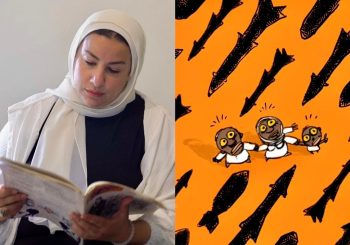

Comments (17)
[…] Cultural Traditions in Dance & Dress: A Brief History of Egyptian Folklore Dancing […]
[…] Cultural Traditions in Dance & Dress: A Brief History of Egyptian Folklore Dancing […]